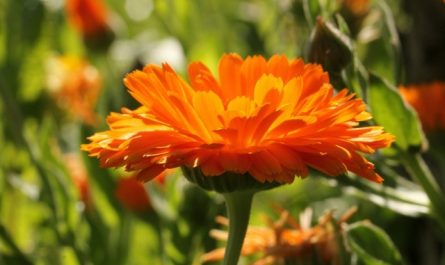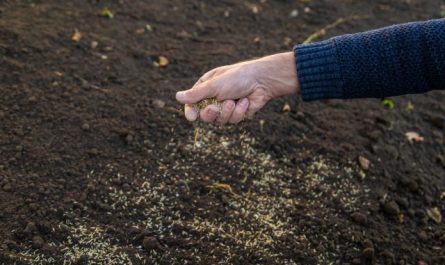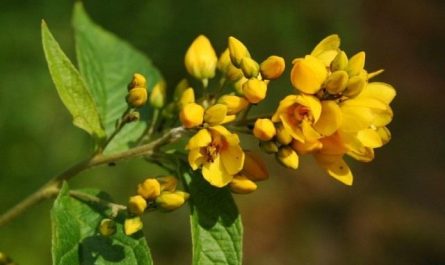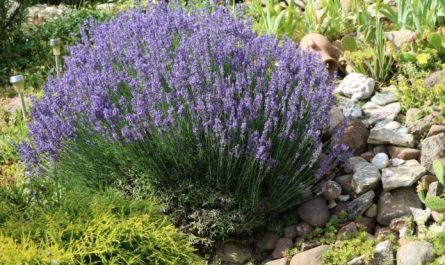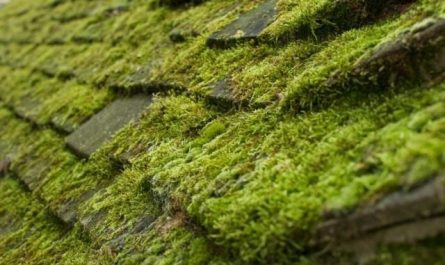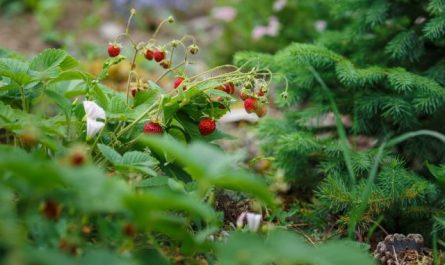Part 1. Herbaceous peonies – all-time favorites
Part 2. Peculiarities of growing herbaceous peonies
Herbaceous peonies, even the best varieties, are among the most unpretentious and durable flowering perennials. Even inexperienced gardeners can grow them, and the requirements for growing peonies are quite modest.

Contents of the second part:
Conditions required for herbaceous peonies
The main thing to pay attention to when choosing a place to plant a herbaceous peony is a sufficient amount of light. All herbaceous peonies are sun-loving plants, but can tolerate light shading at midday. Insufficient lighting affects the quantity and quality of flowers, so herbaceous peonies are best placed in well-lit areas. In the shade, these perennials do not bloom at all, but the bush always retains its attractiveness.
Herbaceous peonies love protected and warm places. New varieties have increased shoot resistance, do not lie down under the weight of the inflorescences, but even they should be placed in areas protected from active drafts. It is worth remembering that, like roses, peonies need to ensure free air circulation around the bushes. Peonies are placed away from large plants, buildings, small architectural objects – so that the plants grow and breathe freely.
The soil for peonies is best selected from fertile and well-developed substrates. Loams are best for these perennials – loose, fertile, fresh (or at least not too dry). Herbaceous peonies prefer a slightly alkaline or neutral reaction (the optimal pH value is from 6 to 6,5).
Plants can tolerate slightly acidic, but not extremely acidic soil, the reaction of which can be adjusted in advance by adding lime. Peonies do not tolerate dampness, areas with high groundwater levels, lowlands, places where there is a risk of stagnant water in the spring are not suitable for them. Compacted soils are not suitable for this perennial.
Planting herbaceous peonies
Preliminary soil preparation is carried out several weeks or a month before planting the seedlings. In high-quality fertile soil for peonies, deep digging and adding organic fertilizers to the soil is sufficient (plants do not like manure, so compost or leaf humus is added to the soil). But usually the soil for planting peonies needs to be qualitatively improved.
There are many options for preparing soil mixtures, each of which provides peonies with a sufficient level of nutrition and the “correct” soil texture:
- The soil removed from the planting holes is mixed in equal proportions with compost, peat and sand, supplementing them with the standard portion of complete mineral or phosphorus-potassium fertilizers recommended by the manufacturer, a handful of wood ash. If necessary, the texture of the soil is adjusted by adding clay or sand.
- The planting holes are filled with different soil mixtures: a mixture of garden soil with sand, peat, and humus taken in equal quantities is poured into the planting hole to half or two-thirds of its height, adding to them double superphosphate (200-250 g, can be replaced with twice as much bone meal) to increase the nutritional value, iron sulfate (a tablespoon per planting hole is enough), wood ash (several handfuls or 3-4 cups) and potassium carbonate (half a tablespoon). The planting hole is filled to the top with ordinary garden soil without impurities.
- The planting hole is filled over the drainage with a layer of a mixture of compost, humus and a double portion of mineral fertilizers, 20-30 cm thick, and for planting and filling the planting holes, use ordinary soil, to which organic fertilizers are added.
Considering the size of the rhizome and the plant’s aversion to root injuries, planting holes for herbaceous peonies are dug in the same way as for planting large trees and shrubs – about 60-70 cm in width and depth. On damp soils or in places where there is a risk of stagnant water, a high layer of coarse drainage (at least 20 cm) is placed on the bottom of the planting holes.
The planting holes are filled with the selected mixtures, allowing them to compact and settle before planting. If preliminary preparation was not carried out in time, then when filling the planting holes, it is necessary to pour and compact the layers to avoid soil shrinkage during planting.
The planting time for peonies is limited due to the fairly early flowering period and the dying off of the above-ground parts for the winter. Plants are replanted only after flowering and the ripening of renewal buds and fruits, in early autumn (the first and second decades of September) or at the end of August.
The planting distance for herbaceous peonies is at least 1 m. Only such a distance allows the bushes to develop freely and not become crooked, to form them thick, elegant and symmetrical.
Peonies do not like to be transplanted, so being careful and handling the roots carefully when planting new bushes is the key to their health and longevity. Plants are placed on a sand cushion so that after the soil settles, it is slightly deepened, focusing on the buds: they should be located 3-5 cm below the ground level. Deeper deepening will lead to both the absence of flowering and health problems of the plant, and higher planting will increase the risk of freezing.
Usually, the plant is installed at ground level or slightly higher, which after filling the holes with soil, watering and shrinking allows you to get the desired depth. When planting, the soil is carefully added and manually compacted so that there are no voids between the roots.
The planting of peonies is completed with traditional abundant watering. With the onset of persistent frosts, the plants are necessarily mulched for the winter.

Humidity requirements and watering
Herbaceous peonies are quite stable and unpretentious, requiring minimal watering during the flowering period.
In fact, there are only two mandatory waterings:
- at the end of June, watering allows peonies to form high-quality renewal buds;
- At the end of August, watering stimulates the growth of strong adventitious roots.
But if possible, you can not limit yourself to only two waterings. Watering at the stage of budding and flowering, as well as during the period of active leaf growth, allows you to get more spectacular and lush flowering bushes. Watering is carried out only during droughts, compensating for the insufficient level of natural precipitation.
The plant does not tolerate over-watering or stagnant water, so one maintenance watering per week is enough. After flowering, peonies do not need to be watered, but these additional procedures allow you to preserve attractive greenery longer. The main thing is not to overdo it.
When carrying out any watering for herbaceous peonies, it is important to make sure that the soil is soaked to the full depth of the roots. Usually, for each bush it is necessary to use not the standard 10 liters, but 2-3 buckets of water. Peonies are watered only in the evening, on days with high night temperatures, not with cold water. You can simplify watering by additionally laying communications for “point” watering under the root or creating watering holes.

Rejuvenation, pruning and tying up of bushes
Herbaceous peonies are long-lived and can delight for decades, but due to thickening and expansion, the quality of their flowering usually deteriorates with age, it begins to suffer on bushes older than 7-10 years. It is better to divide the bushes of varietal herbaceous peonies regularly, with a frequency of 1 time in 5-8 years. Dividing the bushes is carried out only in late summer or early autumn.
Peony varieties with unstable shoots, as well as bushes growing in open areas, quickly fall apart and lose their attractiveness when they begin to bloom under the weight of their heads without timely garters. Luxurious flowers lying on the ground are not the most pleasant sight. Therefore, at the beginning of the growth of flower stalks and at the budding stage, peonies are tied up so as not to allow the branches to bend, bend, or break.
There are special supports for sale that are installed on the bush, but you can tie peonies to simple pegs installed around the perimeter of the bush, wrapping the bush with soft twine or cords in a circle at the budding stage and raising the circle as the flowers bloom and the flower stalks grow.
Removing flowers from peonies is done differently, depending on whether the flowers are cut for bouquets or left on the bush to reveal their full decorative effect:
- For bouquets, branches are cut before they bloom, after the outer petals have become colored in a color characteristic of the variety – for simple and semi-double varieties, or after the lower petals have opened and bent back – for densely double varieties. No more than half of all the flowers of any herbaceous peony can be removed, because cutting all the shoots disrupts the process of laying renewal buds. Flowers with stems up to 40 cm long are cut, always leaving a shoot with 2-3 leaves in the bush. Peonies are cut early in the morning, only on fine days, immediately placing the flowers in water and coolness. For bouquets, the cuts are renewed under water.
- To obtain larger and better quality flowers, you can remove the side buds, leaving only the central one on each shoot.
- Fading flowers are cut off after they start to shed their petals. Faded flowers should not be left on the bush, as this greatly increases the risk of spreading diseases and infecting the plant. If you want to let the seeds ripen, then 1-2 flowers from the first ones are left on the bush, removing the rest. Faded flower stalks are not cut to the base, but the leafy part of the shoots is left for the formation of buds.
- It is not advisable to allow new peony bushes to bloom for the first two years after planting in order to form a powerful rhizome and strong renewal buds.
Pre-winter pruning of peonies is a mandatory measure. But it should not be done too early. It is better to postpone pruning peony bushes until the onset of stable frosts. All above-ground parts of the plants are removed, leaving stumps 3-4 cm above the renewal buds, almost at ground level. All cut parts of herbaceous peonies are burned, not left on the site and not used for composting. It is advisable to sprinkle the remains of the bush with wood ash to prevent the spread of diseases.
Fertilizers for herbaceous peonies
In order for the plant to please with a large number of flowers, fully demonstrate its varietal properties, it is necessary to regularly replenish the level of nutrients in the soil. Herbaceous peonies are fed in the standard way for all flowering plants, making three additional feedings per season:
- At the beginning of active growth. For the first feeding, it is preferable to use nitrogen fertilizers to stimulate rapid growth of shoots and leaves.
- At the budding stage. For the second feeding, use complete mineral fertilizers in standard quantities.
- At the peak of flowering. This feeding can be replaced by two procedures – at the beginning of the first flowers blooming and at the end of flowering. For these feedings, it is preferable to use phosphorus-potassium fertilizers.
If herbaceous peonies are grown for cutting or varieties with unknown winter hardiness are grown, then instead of classic fertilizing, fertilizing can be done at the beginning of growth with nitrogen or complete fertilizers, in June – with organic or complete mineral fertilizers, and in September – with potassium-phosphorus fertilizers.
Spraying with growth regulators and foliar feeding have a beneficial effect on the beauty of inflorescences and the general condition of plants. Such procedures are carried out only in summer and no more than once a month. Young plants respond especially well to foliar feeding.
In addition to basic care procedures, a few more agricultural techniques should be included in the care program for herbaceous peonies:
- mulching the soil, with mandatory renewal of the mulch layer in the spring (it is advisable to use organic fertilizers or a mixture of soil and organic matter in a layer of up to 10 cm);
- weeding, regular removal of weeds;
- loosening the soil to maintain its water permeability, which is preferably done after each watering or heavy rainfall.

Wintering of herbaceous peonies
Despite the fact that garden peonies are considered winter-hardy plants, do not forget that their renewal buds are located high and are not protected by a sufficient layer of soil. Peonies only overwinter well under snow, so it is better to take timely measures and create a light shelter that guarantees successful overwintering even in snowless periods.
Peonies are very susceptible to rotting, so leaves or straw are not used for covering. It is best to create a thick layer of mulch from peat or compost (at least 5-7 cm) over the bushes cut for the winter. But such covering is considered mandatory only for young and varietal peonies, whose acclimatization (in the past) is unknown. Adult plants purchased from local nurseries do not need to be covered at all.
In spring, there is no need to rush to remove the mulch layer: the cover is removed only after the appearance of reddish sprouts and the beginning of shoot development. The procedure for removing the cover must be carried out carefully, because young sprouts are very fragile. After removing the cover, the soil around the bush must be loosened.

Pest and disease control
Herbaceous peonies are particularly susceptible to gray mold, which is considered the main cause of loss of these herbaceous perennials. The slightest deviation in soil characteristics towards compaction, acidic reaction or excess nitrogen sharply increases the risk of damage to the bushes. But in addition to gray mold, herbaceous peonies are not so rarely affected by common diseases of garden plants – from spotting to stem and root rot, powdery mildew and even rust.
For unstable varieties of herbaceous peonies, the most reliable way to avoid problems is timely and regular prevention. It is enough to treat the plants with a copper sulfate solution (from rust – with a bodroska mixture, from powdery mildew – with colloidal sulfur) or a systemic fungicide annually to protect them from infection. Fighting infected bushes is a long process and not always successful. To cope with this problem, systemic treatments with fungicides and preventive treatments in early spring are necessary.
Pests on herbaceous peonies are less common. But aphids, mites and thrips can cause no less harm than diseases. It is better to fight insect pests with systemic insecticides at the frequency and concentration recommended by the manufacturer.

Propagation of herbaceous peonies
Like any other peonies, herbaceous peony varieties can be propagated both by seed and vegetative methods.
The easiest way to obtain offspring of herbaceous peonies that fully retain all the characteristics of the original plant is by rejuvenating the bushes and planning division. Only those herbaceous peonies are divided that have at least 7 full-fledged shoots and have had full flowering for several years.
The optimal time for division coincides with the planting time – from the second half of August to the end of September. Before you start digging, you should cut off all the shoots of the plant, leaving not very short, about 15 cm long, stumps on all stems.
The procedure itself is a little complicated by the fragility of the peony root system:
- The bushes are dug out very carefully, with a large lump of earth, trying not to damage the young and old roots. It is best to take out the bush by first digging around it along a wide radius, and then – removing a very large lump of earth.
- Depending on the condition of the soil, it is carefully shaken off or washed off with a gentle stream of water, exposing the rhizome for inspection. After removing the main soil, the bush is carefully examined and left to dry for several hours.
- The dried bush is divided with a sharp knife or other sharp tool so that each part has at least 2-3 shoots, 3 renewal buds and strong new roots (the optimal size of the separated rhizome is about 10-15 cm). Both large and small divisions, as well as whole bushes, take root poorly and require careful care.
- Each division is inspected, removing damaged areas of the roots. All cuts and breaks on the plant must be treated with ash or special preparations for treating wounds. Before planting, it is better to soak the plants in fungicide solutions, and then in rooting stimulants, but such treatment is not considered mandatory. Soaking is carried out before pruning.
- Planting of herbaceous peony divisions is carried out according to the same rules as planting of peonies in general. Plants divided at the end of summer take root well and grow actively, but they will bloom only in the second or third year after transplantation (even if the bushes produce flowers in the first or second year, it is better not to allow them to bloom in order to get larger and more abundant flowers in the third year).
Herbaceous peonies are also propagated by another vegetative method – root cuttings or separate stems with a bud and roots. Small sections of the rhizome with one dormant bud at the base of a single shoot are separated from the bushes. It is better to carry out this procedure not in early autumn, but in July, immediately shortening the shoot to 2-3 leaves.
The seedlings are rooted like ordinary cuttings in seedling beds (without a cap, but with constant care). For the winter, the plants are covered with a thick layer of mulch, and then the peonies are grown for several years, receiving flowering plants only in the fifth year after rooting.
Propagation by seeds is a method that is used only in the selection of herbaceous peonies and is very rarely used in private gardens (unlike their tree-like relatives and species plants). But if you want to try your hand at breeding new peonies, it is better to sow them before winter. Peonies will bloom only in the fourth or fifth year.
The first part of the material: Herbaceous peonies are all-time favorites


